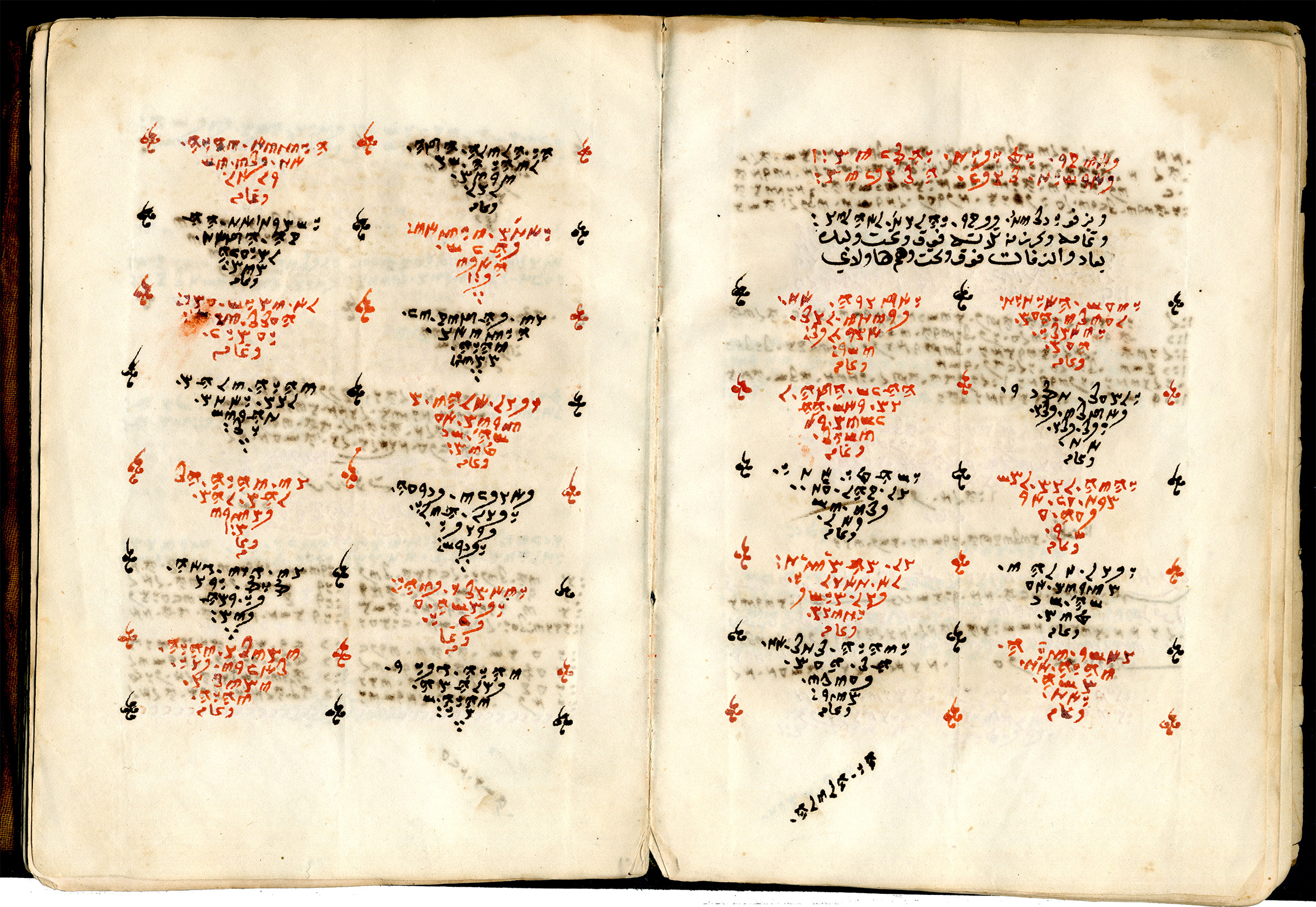The Samaritans, an offspring of the tradition of Ancient Israel, became independent from the Jewish tradition in the 2nd century BCE. A main point of difference between Jews and Samaritans has been the question of the central holy place, which according to the Samaritan beliefs is not found in Jerusalem, but on Mount Gerizim in the vicinity of Nablus, or the Biblical city of Shechem.
Although their sanctuary on Mount Gerizim was destroyed in 128 BCE, the Samaritans have continued to celebrate the yearly Passover sacrifice in accordance with the Biblical text of Exodus 12. The present manuscript from the collections of the Katz Center [CAJS Rar Ms 104, 31v-32r], a booklet with 190 pages, contains the festival liturgy for this holiday with prayers in Samaritan Aramaic and Hebrew, and with commentaries and explanations in Arabic. It was written in 1844, at a time when the Samaritan holy places on the summit of the mountain were generally inaccessible for the Samaritans due to restrictions imposed by the Ottoman authorities. The manuscript gives witness to this difficult situation since the prayer on the morning of Passover is reported to be held in the city of Nablus, and not on Mount Gerizim, according to the title of that part. The page shown on this image gives a list of Biblical passages to be recited during this service.
The manuscript was among those brought from Nablus to London by the Samaritan Jacob ash-Shalaby in 1854, and it became part of the manuscript collection of Mayer Sulzberger in 1912. Sulzberger (1843‒1923), a leading judge and a most important public figure in Philadelphia, and the first president of Dropsie College, was born in Germany and came to the US as a child after the revolution of 1848. His collection of Samaritan manuscripts is one of the biggest and most important world-wide.
